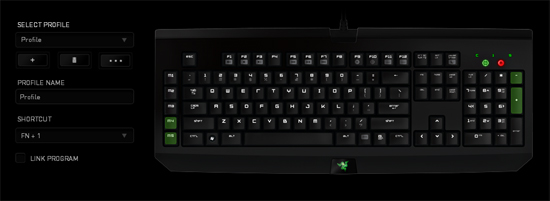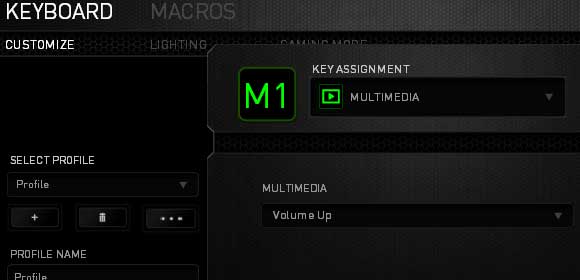If your Razer Blackwidow does not have a volume wheel, you can set up some macros from Razer Synapse.
In this article, you will find out how to do it, in Razer Synapse 2.0 even though it might work in 3.0 as well.
I am talking about Razer 2013, the first mechanical keyboard released by Razer in 2012.
The first version of Razer Blackwidow 2013 doesn’t have multimedia buttons for increasing and decreasing the sound volume.
However, you can set the “numpad -” and “numpad +” to act as volume controllers, (to decrease and increased the volume)
What you need to do is to click on a button from the keyboard, I like to use on M1 for volume up and M2 for volume down and readjust the buttons to “Multimedia volume up” / “Multimedia volume down”.
That’s pretty much all you have to do.
To increase the volume, keep the button pressed, you will see in Windows 10 an UI that displays the volume.
The same for decreasing the volume.
Start by downloading and installing this software: “autoHotkey” from autohotkey.com. It is free.
Open autoHotkey, click on “File” and then on “Edit script”.
Old way of setting up volume wheel macros for Razer Synapse 2.0
Razer Blackwidow volume wheel macros
Add these codes to your macro:
+F5:: Send {vkB3sc122}
+F2:: Send {Volume_Up 1}
+F4:: Send {Volume_Down 1}
+F8:: Send {Media_Next}
+F7:: Send {Media_Prev}
Save the page. Right click on the autoHotkey icon from systray and click on “Reload this script”.

Start Razer Synapse 2.0, go to the Razer Blackwidow tab.
Select the “numpad -” button and assign “keyboard function”.
Now is the tricky part.
To be able to assign Shift+F4 there, you need to spam “Shift+F4” (press together) a few times until the key combo will appear inside there.
Repeat the same process for “Shift+F2” for the “numpad +” button.
Test your new controllers. You can press the buttons just once so the volume will go up/down for an unit or press them continuously to increase/decrease the volume a lot.
Last thing, autoHotkey doesn’t auto-start with Windows. You need to add its executable at auto-start.
